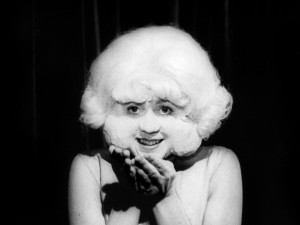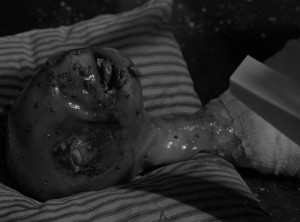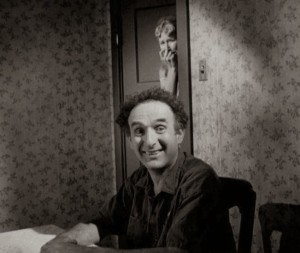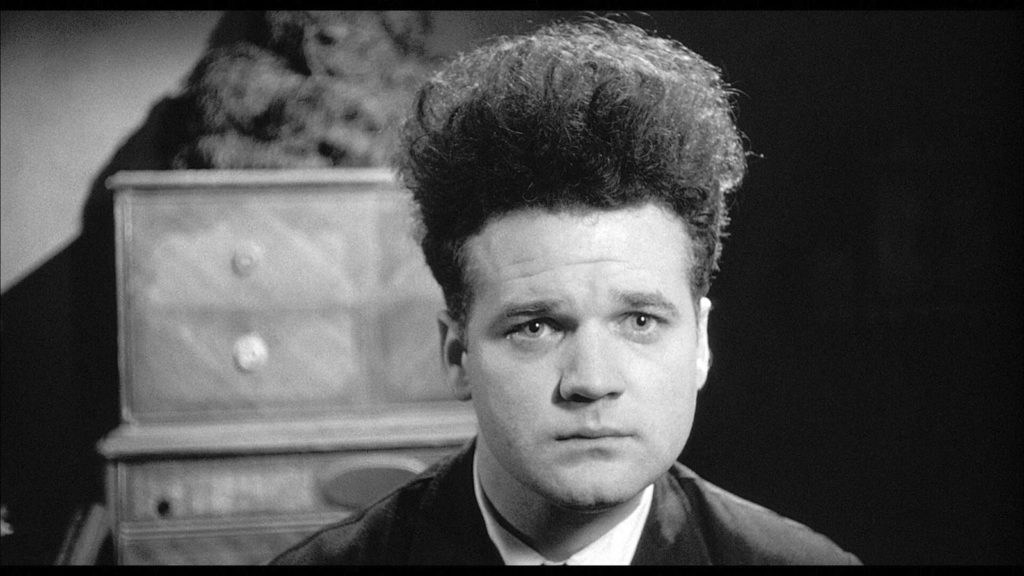If you’re looking for a traditional horror movie, David Lynch’s 1977 surrealist work “Eraserhead” is not for you. If you enjoy a cinematic challenge, an overload to your senses, and a desire to be truly terrified in ways you never thought possible, I dare you to check it out…if you’re brave.
I’ve never quite witnessed a picture like “Eraserhead,” which serves as David Lynch’s debut. Lynch, who would go on to fame with his popular television series Twin Peaks, would act as director, writer, and producer of the film.
Lynch does what brilliant artists all strive to do with “Eraserhead” in that he manages to create a work of art that’s both one of the best horror films I have ever seen, and at the same time one of the worst movies I have ever watched.
And that analysis barely etches the surface of the perfection with this truly odd and disturbing tale – a tale that offers no meaning, even at its conclusion. A tale that forces the viewer to decide for themselves.

Describing “Eraserhead” is like attempting to explain a bizarre nightmare to someone. Ten people could watch the movie together, and when they walk out, give you ten different interpretations of what they just saw.
Filmed in a ghoulish black and white, the film is dark in both its metaphorical context and its literal setting – an unidentified industrialized landscape in a seemingly post apocalyptic world. The landscape is bleak and littered with decay. There is no sunlight. There is no plant life.
We follow the life (or lack thereof) of Henry Spencer (Jack Nance) a print operator who describes himself as “on vacation.” Henry’s one room apartment is enough to send shivers down your spine – claustrophobics would doubtless convulse at the notion of sleeping there.
The terror in “Eraserhead” comes from the truly unsettling and unexplainable components of the film; the confusing and awkward interactions Henry has with his girlfriend Mary (Charlotte Stewart) and her family, a chilling vision of a creepy looking woman that resides inside of the radiator in his apartment – coming out at night to croon a haunting lullaby, or the unnerving and constant cries of his newborn “baby.”
 That the very landscape is so desolate compounds the anxiety as you watch. Where and when Henry resides is not revealed. The hopelessness of his situation is so unsettling it will render you in confounded dismay.
That the very landscape is so desolate compounds the anxiety as you watch. Where and when Henry resides is not revealed. The hopelessness of his situation is so unsettling it will render you in confounded dismay.
Everything Lynch includes in the film is deliberate, and its obvious many films that went on to horror movie stardom borrowed a page or two from “Eraserhead.”
Director Stanley Kubrick is said to have made the cast of his infamous movie “The Shining” watch “Eraserhead” to put them in a horror mood.
David Lynch assembled a prefect star in Jack Nance to carry the titular role. Nance, as unusual a character as there ever was off screen as well, completely becomes the character of Henry Spencer.
The film contains little in the way of dialogue (there is not a word uttered for the first eleven minutes), rather telling the story with the robust visualizations Lynch incorporates. Nance is perfect for the part in each and every way.

Even the special effects work well, an area often left behind in older movies. Gruesome images and a perfect combination of jumps and overall queasiness will leave you wanting more.
I could score “Eraserhead” an A+ and I would be justified in doing so. As a work of art, it masters cinema with its sights, sounds, and breadth. I could give it an F, and that would be okay too. As horror movies go, it’s one of the best I have ever seen.
There is really no discernable way to explain it. “Eraserhead” is a truly freakish film that will leave you thinking about it long after you’ve stopped watching…and long after the lights have gone out for the night.
by – Matt Christopher


